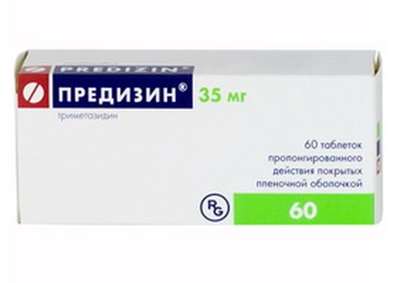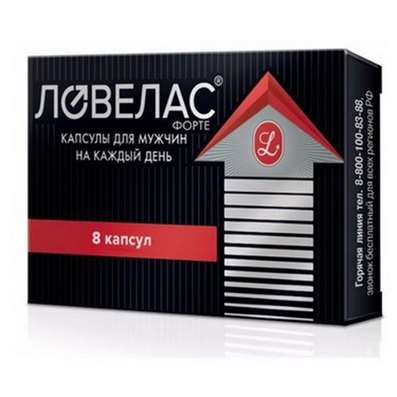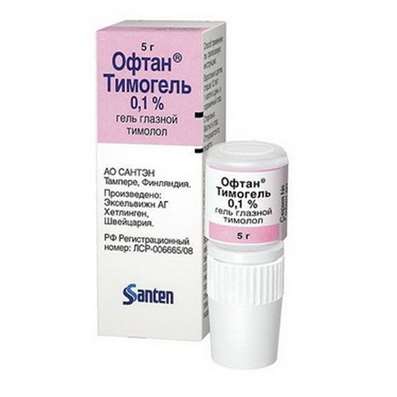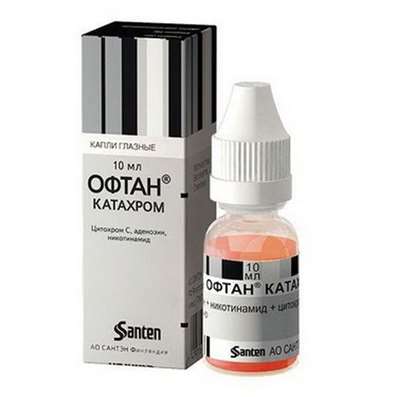Instruction for use: Talinolol (Talinololum)
I want this, give me price
chemical name (±) -N-Cyclohexyl-N '- [4- [3 - [(1,1-dimethylethyl) amino] -2-hydroxypropoxy] phenyl] urea
Pharmacotherapeutic group:
Beta-blockers
antiarrhythmic agents
The nosological classification (ICD-10)
I10 Essential (primary) hypertension
Hypertension, Arterial hypertension, Arterial hypertension crisis course, Essential Hypertension
Primary hypertension, Arterial hypertension, complications of diabetes, hypertension, The sudden increase in blood pressure, Hypertensive disorders of blood circulation, hypertensive condition, hypertensive crises, hypertension, arterial Hypertension, malignant Hypertension, Hypertonic disease, Hypertensive crisis, Hypertension, accelerated hypertension, malignant hypertension, The aggravation of hypertensive disease, Transient hypertension, Isolated systolic hypertension
I15 Secondary hypertension
Arterial hypertension, complications of diabetes, hypertension, The sudden rise in blood pressure, Hypertensive disorders of blood circulation, hypertensive condition, hypertensive crises, hypertension, arterial hypertension, malignant hypertension, Hypertensive crisis, Hypertension, accelerated hypertension, malignant hypertension, hypertensive crisis, The aggravation of hypertensive disease, Transient hypertension, hypertension, Arterial hypertension, Arterial hypertension crisis course, renovascular hypertension, symptomatic hypertension, renal hypertension, Renovascular hypertension, Symptomatic hypertension
I20 Angina [angina]
Heberden disease; Angina pectoris; The attack of angina pectoris; recurrent angina; Spontaneous angina; Stable angina pectoris; Angina rest; Angina progressing; Angina mixed; Angina spontaneous; stable angina; Chronic stable angina; Angina Syndrome X
I21 Acute myocardial infarction
Myocardial infarction in the acute phase, Acute Myocardial Infarction, Myocardial infarction with pathologic Q wave and without, Myocardial infarction complicated by cardiogenic shock, Infarction left ventricular, Transmural myocardial infarction, Myocardial infarction netransmuralny (subendocardial), Netransmuralny myocardial infarction, Subendocardial myocardial infarction, The acute phase of myocardial infarction, Acute myocardial infarction, Sub-acute phase of myocardial infarction, Subacute phase of myocardial infarction, Thrombosis of the coronary arteries (the arteries), Threatened myocardial infarction, Myocardial infarction without Q wave
I25 Chronic ischemic heart disease
Coronary heart disease on the background of hypercholesterolemia; Coronary heart disease is a chronic; Coronary heart disease; Stable coronary artery disease; Percutaneous transluminal angioplasty; Myocardial ischemia, arteriosclerosis; Recurrent myocardial ischemia
I47.1 Supraventricular tachycardia
Supraventricular paroxysmal tachycardia; supraventricular tachyarrhythmia; supraventricular tachycardia; Supraventricular arrhythmias; Supraventricular paroxysmal tachycardia; supraventricular tachyarrhythmias; supraventricular tachycardia; Neurogenic sinus tachycardia; orthodromic tachycardia; Paroxysmal supraventricular tachycardia; Paroxysm of supraventricular tachycardia; Paroxysm of supraventricular tachycardia with WPW-syndrome; Paroxysm of atrial tachycardia; Paroxysmal supraventricular tachyarrhythmia; Paroxysmal supraventricular tachycardia; Politopnye atrial tachycardia; Atrial fibrillation; Atrial tachycardia is true; Atrial tachycardia; Atrial tachycardia with AV block; reperfusion arrhythmias; Reflex Bertsolda-Jarisch; Recurrent sustained supraventricular paroxysmal tachycardia; Symptomatic ventricular tachycardia; Sinus tachycardia; Supraventricular paroxysmal tachycardia; supraventricular tachyarrhythmia; supraventricular tachycardia; supraventricular arrhythmia; supraventricular arrhythmias; Tachycardia of AV connections; supraventricular tachycardia; Tachycardia orthodromic; sinus tachycardia; The nodal tachycardia; Chaotic atrial tachycardia politopnye; Wolff-Parkinson-White
I47.9 Paroxysmal tachycardia, unspecified
Paroxysm of ventricular tachycardia, Paroxysmal dysrhythmia, Paroxysmal ventricular fibrillation,Paroxysm sinus tachycardia, Paroxysmal ventricular tachycardia torsades, Paroxysmal atrial fibrillation and flutter
I48 Atrial fibrillation and flutter
Permanent atrial tachyarrhythmias, Relief frequent ventricular rate during atrial flutter or blink, atrial fibrillation, Paroxysm of atrial fibrillation and flutter, Paroxysm of atrial fibrillation,Paroxysmal atrial fibrillation, Atrial premature beats, Tahiaritmicheskoy atrial fibrillation, Tahisistolicheskoy atrial fibrillation, auricular flutter, Life-threatening ventricular fibrillation, Atrial fibrillation, Chronic atrial fibrillation, supraventricular arrhythmia, Paroxysmal atrial fibrillation and flutter, Paroxysmal fibrilloflutter, Atrial premature beats
I49.1 Atrial premature depolarization
supraventricular arrhythmia, supraventricular arrhythmias, supraventricular beats, atrial premature beats
I49.3 Premature ventricular depolarization
Asynergia left ventricle, ventricular Arrhythmia, Pronounced PVCs, Ventricular fibrillation, ventricular beat, Ventricular arrhythmias, Paroxysmal ventricular arrhythmia, Recurrent ventricular arrhythmias, ventricular premature beats, Asynergia ventricular
I50.9 Heart failure, unspecified
Diastolic stiffness, Diastolic heart failure, Cardiovascular failure, Heart failure with diastolic dysfunction,Cardiovascular failure
I51.8 Other ill-defined heart diseases
CodeCAS 57460-41-0
Characteristic
white crystalline substance soluble in water, propylene glycol and ethanol, slightly soluble in chloroform. The molecular weight of 308.8
Pharmacological Properties of SotalolPharmachologic effect
antianginal, hypotensive, anti-arrhythmic.
Selectively blocking beta1-adrenergic receptors of the heart. Decreases automaticity of sinus node, shows a moderate negative chrono, foreign-and dromotropic activity normalizes the baroreflex response. It lowers blood pressure (antihypertensive effect reaches a maximum after 5 hours, lasts 24 hours and is stabilized in the 2nd week of treatment). Reduces myocardial oxygen demand, the severity of left ventricular diastolic dysfunction, improves exercise tolerance. Reduces plasma levels of norepinephrine, eliminates hyperactivation simpatoadrenalovoj system: dysfunction and death of cardiomyocytes (necrosis and apoptosis), hemodynamic deterioration, reducing the density and affinity of beta-adrenergic receptors, chronic tachycardia, myocardial hypertrophy, induction of myocardial ischemia (due to tachycardia, myocardial hypertrophy and vasoconstriction) provocation and arrhythmias. By reducing the level of noradrenaline inhibits renin increased synthesis and breaks the "vicious circle" of mutual activation of the renin-angiotensin-aldosterone system and simpatoadrenalovoj. In acute myocardial infarction reduces mortality and relapse rate by reducing the area of ischemia and arrhythmia frequency. It has no negative impact on lipid metabolism.
In experimental studies in pregnant rats brief introduction to doses of 300 mg / kg / day (orally) or 12.5 mg / kg / day (w / w) was accompanied by toxic effects on the mother's body, disturbance embryo-fetal development (increase in frequency of death postimplantation , reduced fetal body weight or neonatal).
The ingestion of 50-70% is absorbed from the gastrointestinal tract (eating reduces absorption). Bioavailability - 40-70%. Cmax in plasma observed after 1,7-4 hours, AUC - 939-1703 (ng / ml) h. Relationship to plasma proteins is 50%, T1 / 2 -. 8,7-17,8 hours Virtually no biotransformiroetsa (less than 1%) is excreted in the urine (60%) and through the intestine (40%). After the on / in a dose of 30 mg in a plasma Cmax - 536-726 ng / ml, AUC - 1280-1586 (ng / ml) h. T1 / 2 - 7,3-18,2 volume of distribution h -. 2.5-3.3 l / kg. It is secreted into breast milk.
Indications
CHD: Angina (voltage instability), acute myocardial infarction (treatment and prevention); hypertension, diastolic heart failure, supraventricular and ventricular premature beats, paroxysmal tachycardia, atrial flutter and atrial fibrillation, cardiac hyperkinetic syndrome, cardiopsychoneurosis of hypertensive type.
Contraindications
Hypersensitivity, cardiogenic shock, severe bradycardia (less than 50 u. / Min), violation of AV (II-III degree) and sinuauricular conductivity, sick sinus syndrome, heart failure (III-IV degree in NYHA) with a significant reduction in left ventricular systolic function , acute myocardial infarction with complications (bradycardia, hypotension, left ventricular heart failure), severe hypotension, asthma, diabetes mellitus (decompensated form), breast-feeding.
Restrictions apply
Obstructive pulmonary disease, impaired renal function expressed violations of peripheral blood circulation, Prinzmetal angina, AV block I degree, pheochromocytoma, diabetes labile flow, metabolic acidosis, allergic history, psoriasis, elderly (over 60 years) and children's age (safety and efficacy of the children are not identified).
Pregnancy and breast-feeding
Perhaps if the expected effect of therapy outweighs the potential risk to the fetus. At the time of treatment should stop breastfeeding.
Side effects
From the nervous system and sensory organs: dizziness, headache, drowsiness, lethargy, sleep disturbances, impaired vision, rarely - depression, hallucinations, psychosis; reduced secretion of tear fluid, hearing impairment.
Cardio-vascular system and blood (blood, hemostasis): sinus bradycardia, AV block, hypotension, rarely - a violation of the peripheral circulation (cold extremities).
From the digestive tract: dyspepsia, abdominal pain, hypoglycemia, cholestatic hepatotoxicity (rare).
Other: bronchospasm, seizures, weight gain, reduced potency, alopecia, rash, hyperhidrosis, sensation of heat.
Interaction
Calcium antagonists (dihydropyridine derivatives) increase antianginal and antihypertensive activity, but with a / in the introduction of increased probability of conduction abnormalities and myocardial contractility, ergotamine may enhance peripheral circulation disorders. Potenziruet negative chrono and Dromotropic cardiac glycosides and antiarrhythmic drugs class IA, peripheral muscle relaxants. In combination with MAO inhibitors may develop hypertension during therapy and for 14 days after their cancellation. NSAIDs weaken the antihypertensive properties (inhibit the synthesis of GHG in the kidneys and retain sodium and water). Sulfasalazine reduces plasma concentration, H2-blockers - increase (hepatic biotransformation block). Against the background of reserpine, clonidine, metildofy possible additive excessive beta-adrenergic blockade; beta-agonists and methylxanthines - the mutual suppression of the action; phenothiazines - increase in the concentration of both drugs in plasma. Dampening effect on the central nervous system of alcohol and psychotropic drugs, reduces the clearance of theophylline.
Overdose
Symptoms include nausea, vomiting, a sharp decrease in blood pressure (blood pressure), with the weakening of reaction to the catecholamines (developing after 30-240 minutes after the last dose), bradycardia, conduction disorders, weakening of the contractility of the heart, violation of intraventricular conduction, CNS depression (apathy, drowsiness , coma), convulsions, hypoxia, bronchospasm.
Treatment: gastric lavage, the appointment of activated charcoal and sodium sulphate, stabilization AAR and electrolyte balance, oxygen; maintaining the activity of the heart (izadrin 1.4 mg / bolus, followed by infusion of 10 mg / 100 ml; 50-100 ug dobutamine, then infusion of 300 mg / 100 ml; dopamine 0.25-0.4 mg / min, then 250 mg / 100 ml; 5.10 mg glucagon for 5 min, then an infusion of 1-5 mg / h); atropine (I / O, stream, 0.5-2 mg per 8 hours), in eufillina / 4-6 mg / kg with bronchospasm, diazepam (5-10 mg / in for the relief of cramps). Perhaps the use of temporary pacemaker. Hemodialysis and hemoperfusion are ineffective.
Routes of administration
Inside, in / in.
Precautions
The lifting should be done gradually (probable "cancellation" syndrome). In patients with allergic history may increase the severity of hypersensitivity reactions and the lack of therapeutic effect of conventional doses of epinephrine. To stop simultaneous treatment with clonidine talinolol canceled gradually, a few days before clonidine, because of the risk of severe hypertensive crisis. In heart failure to prevent the initial weakening of myocardial contractility and blood pressure lowering treatment should be started with very small doses (1/4 minimum therapeutic), followed by slow their rise. The on / in the introduction ECG monitoring is recommended. It weakens the compensatory cardiovascular reactions in response to the use of general anesthetics. Talinolol should be discontinued before surgery under general anesthesia, performing cardiac catheterization with selective coronary angiography.
You need to control blood glucose levels in patients with labile course of diabetes and hyperglycemia. Patients with diabetes should be informed that the main feature of hypoglycemia during treatment is sweating. After a long period of fasting and heavy exercise can cause hypoglycemia.
In the appointment during pregnancy welcome stop for 2-3 days before delivery (risk of bradycardia, hypotension and hypoglycemia in the newborn). Be wary of during the drivers of vehicles and people skills relate to the high concentration of attention. At the time of treatment is recommended to exclude alcohol intake.

 Cart
Cart





